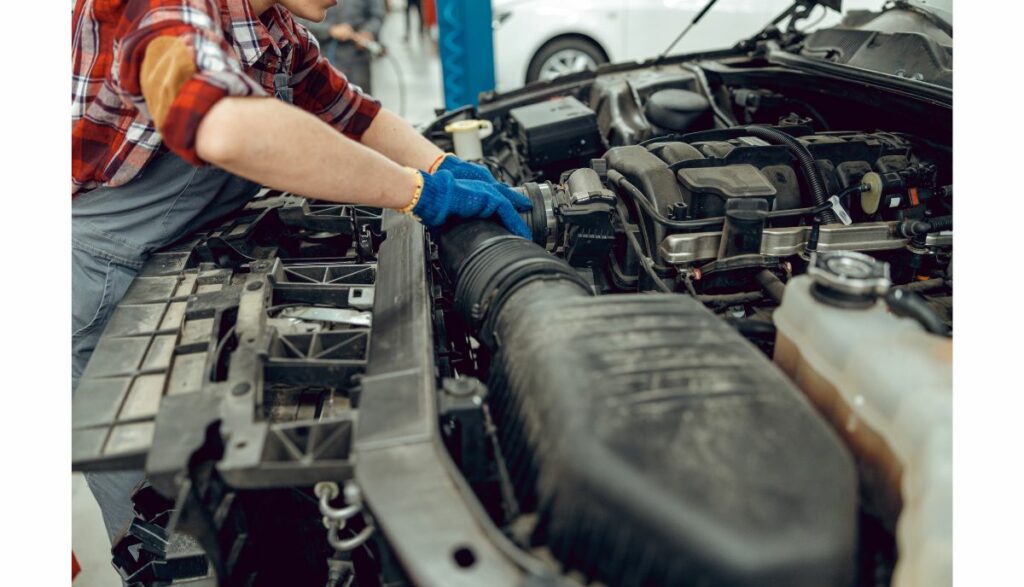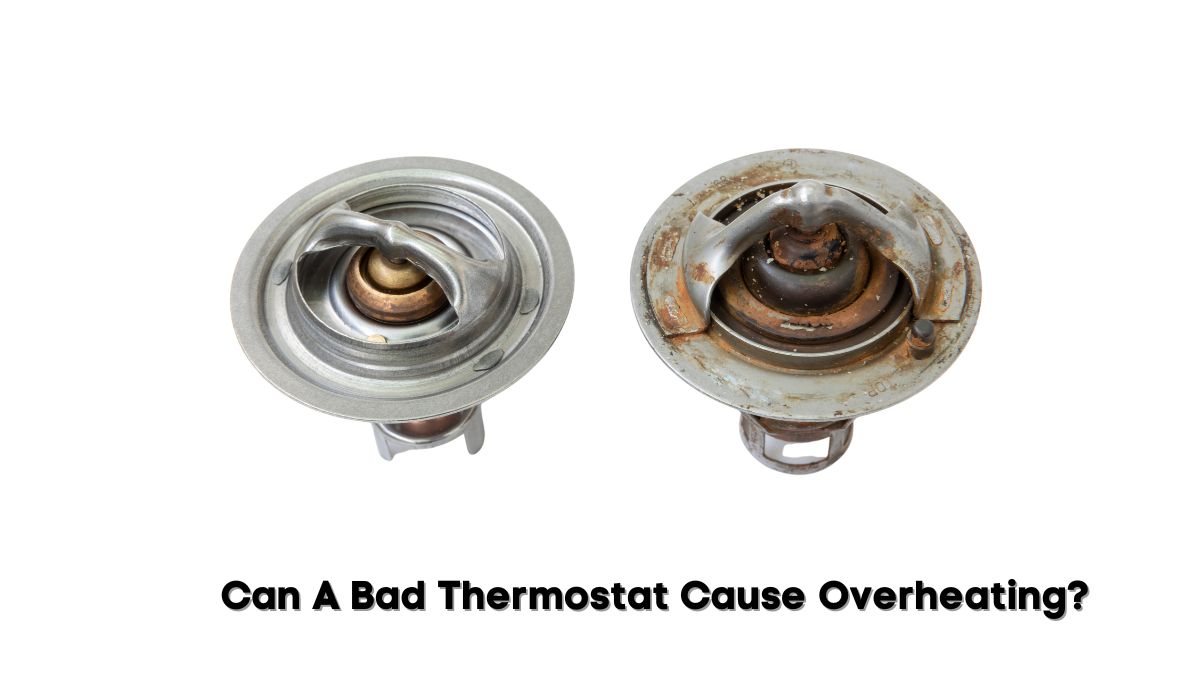A thermostat is a device that detects and maintains the temperature. Therefore, you expect the thermostat to have a direct impact on the temperature, regardless of the setting or application. Where cars are concerned, a defective thermostat can lead to overheating. This is because the thermostat works with the cooling system to maintain optimal temperatures.
How does The Thermostat regulate engine Temperature?
- The engine uses an explosive process to generate the energy that moves a car.
- The combustion in a vehicle produces heat. So do the engine’s moving parts.
- The engine is cold when you first start the car on an ordinary morning. Once it starts, the engine’s temperature will climb gradually until you can drive the vehicle without increasing the engine’s wear and tear.
- The thermostat has nothing to do at this point. The device has a valve that remains closed. This prevents the coolant from running through the engine and stealing the heat it needs to operate.
- If you keep idling the engine, or if you choose to drive away, the temperature will continue to climb until the engine becomes too hot. At that point, the thermostat’s valve will open, and the coolant will finally flow.
- The engine’s cooling system consists of a water pump, radiator, hoses, and a cooling fan. The water pump will circulate the coolant through the engine block to lower the temperature. The coolant will reach various sections of the engine block via the hose. Eventually, the coolant will flow to the radiator, where the cooling fan will remove its heat. This allows the coolant to return to the engine to collect more heat.
Without the thermostat, you will see two significant concerns:
- The coolant will flow continuously. As a result, the engine won’t attain a working temperature.
- The coolant may refuse to flow, and the engine will overheat.
These consequences can manifest even when you have a thermostat because the component is stuck in the open or closed position.
Keep in mind that thermostats respond at different temperatures. An engine may overheat because you installed a thermostat that opens at a higher temperature than the engine can tolerate.
Importance Of Maintaining Optimal Temperature For Engine Efficiency
A thermostat maintains optimal temperatures in the engine. Without this part, the engine will overheat, which can attract disastrous consequences, such as the following:
- You will hear knocking sounds. Hendrick Atlanta expects this symptom to manifest when the engine is 20 – 40 degrees above the desired temperature.
- Once you’re 80 degrees above optimal levels, the engine’s power will drop, and the noise will grow.
- If you continue to drive the vehicle beyond that point, the engine will shut down.
- The hose will rapture.
- Expect the gasket to blow and the cylinder head to crack. This paper in ‘Automobile Transport’ (Kharkiv National Automobile And Highway University) found that a cylinder head can sustain thermal damage within ten seconds of a cooling system failing.
- You may even crack the engine block.
- The pistons and cylinders will deform.
The engine’s poor efficiency is the least of your worries. Although this is the first consequence you will notice before the heat rises to a point where it can damage the engine.
Effects Of Stuck-Closed Thermostat
What happens when the thermostat sticks in the closed position? Is this a mere inconvenience or a serious concern?
A bad thermostat attracts multiple symptoms, including:
- Temperatures will fluctuate dramatically.
- The cabin’s temperature may plummet because the heater refuses to work.
- Coolant levels may drop because the substance keeps spilling over from the cap.
- The engine will make strange sounds.
- Poor fuel economy.
- The engine will lose power.
- The radiator hose will rapture.
Of these symptoms, overheating is the biggest worry because it can destroy the engine. You can expect a replacement engine to cost $4000 – $10000, possibly even more, depending on the model.
What if the excess heat does fixable damage? Even if the high temperatures destroy a few seals and gaskets, you’re still looking at thousands of dollars in repairs. Why? Because your mechanic may insist on rebuilding your engine.
They will take it apart to identify the faulty components before putting the engine back together. This takes several hours, possibly even days, which equates to higher labor fees.
Additionally, overheating can break the head gasket, allowing coolant to invade the combustion chamber and motor oil. As you can see, the consequences of overheating from a closed thermostat are endless.
The more driving you do while the thermostat is closed, the more damage the engine will sustain. In the end, don’t be surprised if the mechanic compels you to buy a new car. Sometimes, this is cheaper than fixing or replacing a dead engine.
How Restricted Coolant Flow Leads To Engine Overheating?
Why does a closed thermostat lead to engine overheating? Because a vehicle uses coolant to lower the temperature in an active engine. But the coolant cannot flow unless the thermostat opens.
If the thermostat stays closed, the coolant will not flow. Without the coolant, temperatures under the hood will continue to rise until the engine suffers irreversible harm. It is worth noting that some thermostats are not actually stuck in the closed position.
Instead, they are designed to open at a much higher temperature. In other words, you installed a thermostat with the wrong temperature rating. The coolant will eventually flow because the thermostat is not stuck. However, the engine’s parts will sustain costly damage before the thermostat opens.
How Does A Bad Thermostat Affect The Overall Cooling System?

The cooling system has several components, and they can all fall prey to a bad thermostat, especially if it causes overheating:
1). Water Pump
- The pump can seize up
- The seal between the pump housing and engine block can fail, creating leaks.
- The pump’s efficiency will deteriorate.
2). Radiator
- The radiator may develop leaks.
- The radiator will corrode.
- The experts at Car Parts expect explosions from radiators with plastic end tanks.
3). Hose
- The hose will blow off the clamps
- The hose will tear or burst.
4). Radiator Cap
- Overheating may loosen the radiator cap, especially when the radiator corrodes.
5). Cooling Fan
- The motor will burn out.
- The blades will distort.
Influence On Radiator Efficiency And Coolant Circulation
On its own, a closed thermostat won’t harm the radiator or affect the coolant. The problem lies in the excess heat the engine will accumulate because the closed thermostat has prevented the coolant from circulating.
Once the coolant starts boiling, you can’t rule out the possibility of the radiator bursting and the hoses rapturing.
Symptoms Of Overheating Due To Thermostat Issues
A thermostat stuck in the closed position will cause overheating. Therefore, you will see all the obvious signs of overheating. You can’t differentiate between overheating because of a thermostat stuck closed and overheating originating from other factors, not without taking additional diagnostic steps.
That includes testing the thermostat with a multimeter and touching the hose. A cold hose points to a closed thermostat because the coolant is not flowing. An open thermostat makes the hose warm or hot because the coolant is flowing.
If you can’t open the car to perform additional diagnosis, take the vehicle to an expert. Let them retrieve and test the thermostat.
Diagnostic Steps For Thermostat-Related Overheating
- Open the hood and remove the radiator cap.
- Turn the key in the ignition and let the engine idle for twenty minutes.
- The coolant shouldn’t flow from a cold start because the thermostat is closed. If you see coolant flowing, the thermostat is stuck open, which is also problematic.
- Look inside the radiator after twenty minutes. If the coolant is flowing, the thermostat is fine. If the coolant is not flowing, the thermostat is stuck closed. Sometimes, you need a flashlight to see the flowing coolant.
- If the temperature gauge slips into the red zone and the coolant won’t flow, you can blame the thermostat.
- Use an infrared thermometer to check the temperature of the upper radiator hose. If it’s the same as the engine’s temperature, the thermometer is open (stuck).
- Retrieve the thermostat and place it in water. Make sure the device is hanging in the water as opposed to touching the floor. When you raise the water temperature, the thermostat should open. If it doesn’t, the thermometer is stuck closed.
If you’ve decided to replace the thermostat, use the manufacturer’s recommendation. Their engineers know the best thermostat for the vehicle’s operating temperature.

